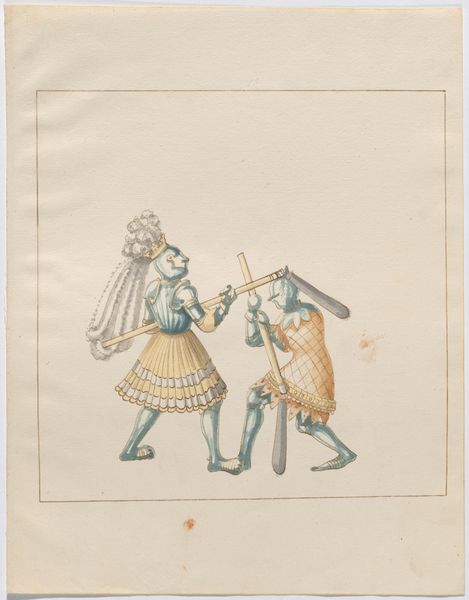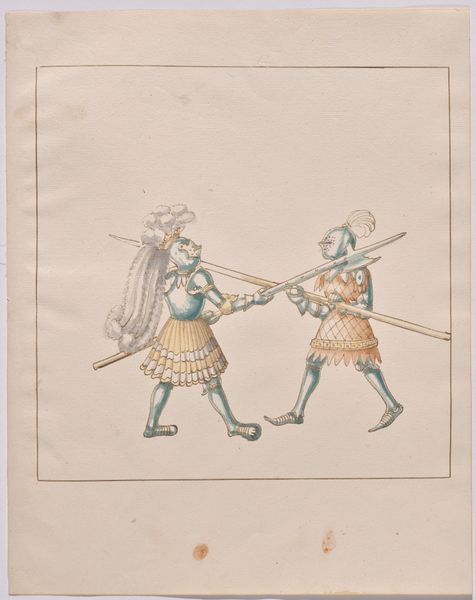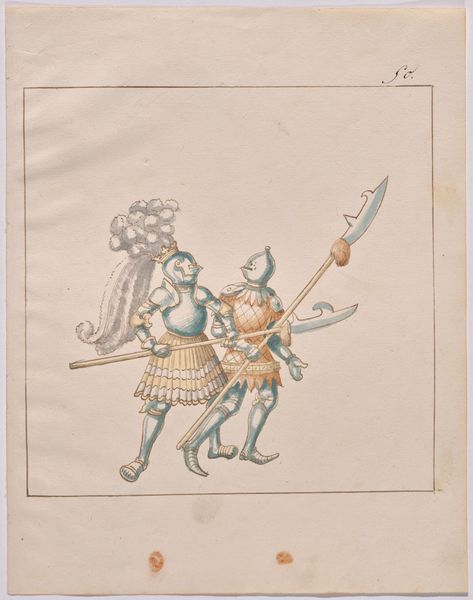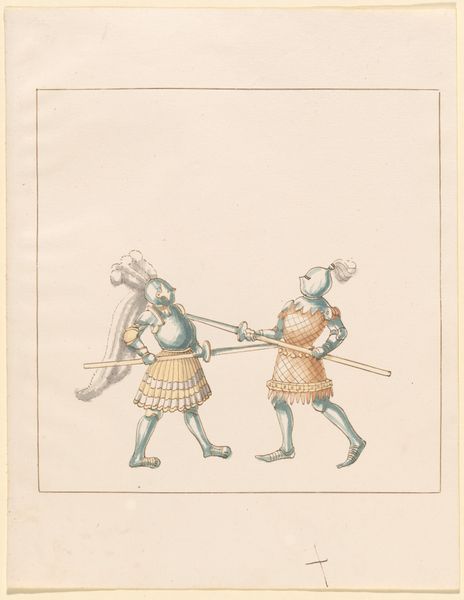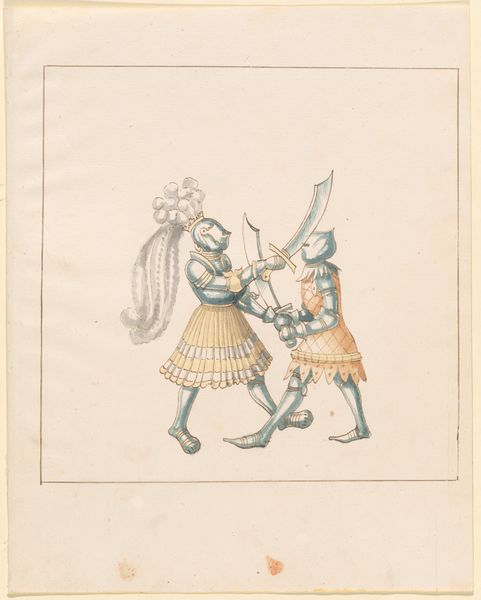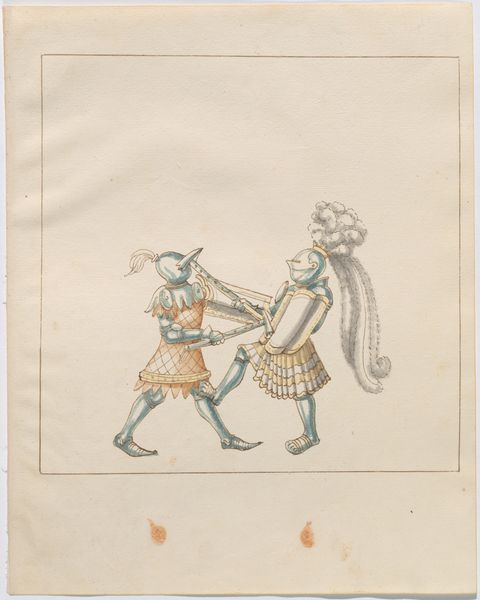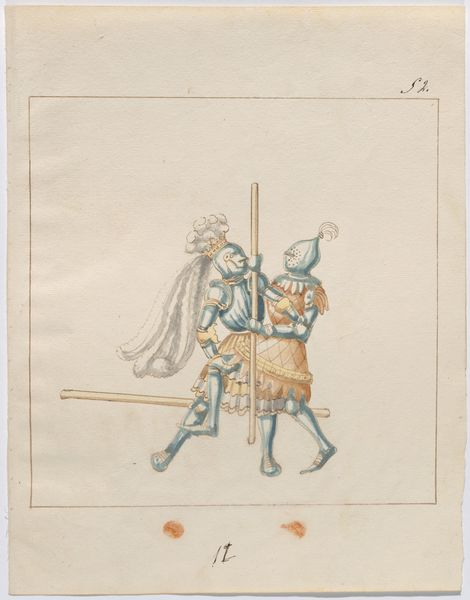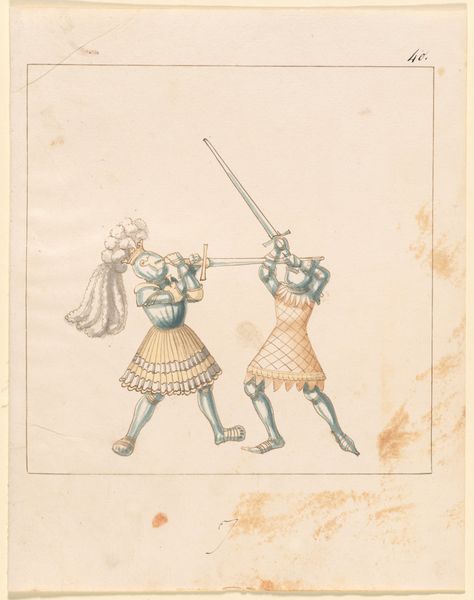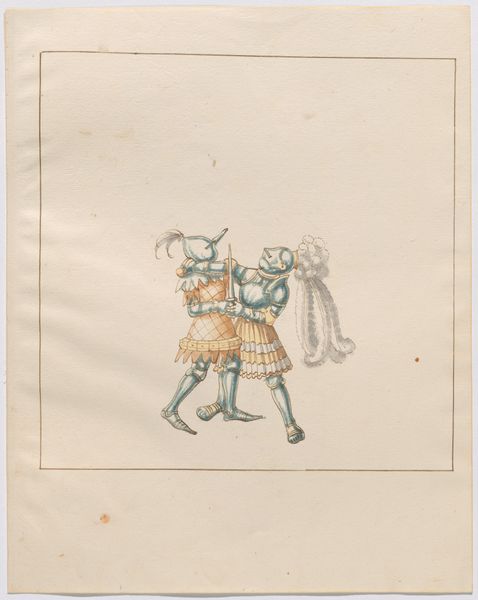
drawing, watercolor
#
drawing
#
figuration
#
11_renaissance
#
watercolor
#
history-painting
Dimensions: sheet: 33.6 × 26.4 cm (13 1/4 × 10 3/8 in.)
Copyright: National Gallery of Art: CC0 1.0
Editor: Here we have "Foot Combat with Poles," a watercolor and ink drawing made circa 1512 to 1515. The draftsmanship and colour palette feel restrained, even muted. What compositional elements stand out to you in this piece? Curator: The dynamic energy of the crossed poles immediately draws the eye. Note how their angles create a visually complex 'X' shape, forcing our attention onto the central struggle. Furthermore, observe the colour and detail differentiation of the armor; one dull, and one of diamond shapes. How do these visual structures contribute to the artwork's meaning? Editor: The contrasting armours could indicate opposing sides, enhancing the sense of conflict. But what else? Curator: Consider the use of negative space. The artist has framed the combatants within a tight border, heightening the tension. Also, analyse the brushwork itself - how do these swift, gestural strokes animate the combat? Does this speed suggest movement and urgency? Editor: Yes, it definitely contributes to the kinetic energy, implying rapid strikes. What about the lack of background? Does its flatness diminish or enhance the focal point? Curator: The minimal background directs uninterrupted attention to the subjects. It creates an almost diagrammatic study, privileging the choreography of combat over narrative context. Editor: I see it now; by stripping away distractions, the formal elements – line, shape, colour, and their interplay – become the true subject. Thank you. Curator: Indeed, this focus allows us to dissect the artist’s skillful manipulation of visual elements, leading us to new perceptions of aesthetic form, motion, and meaning within art.
Comments
No comments
Be the first to comment and join the conversation on the ultimate creative platform.



